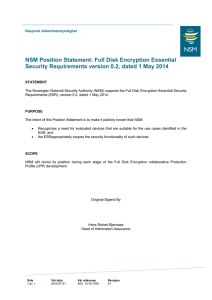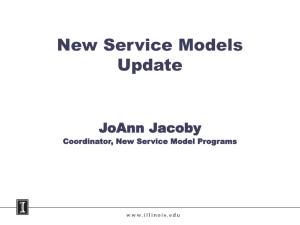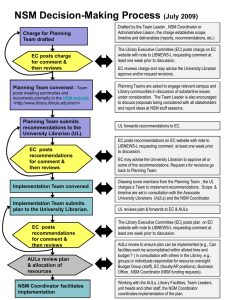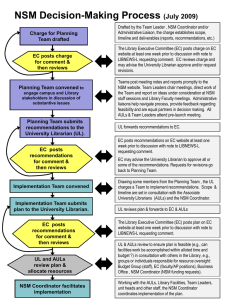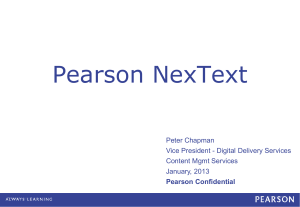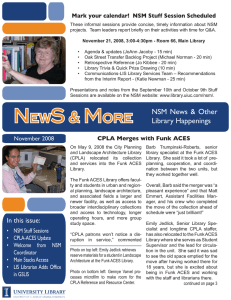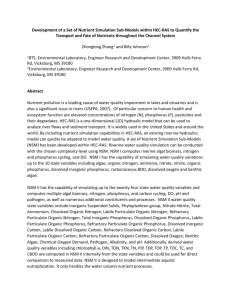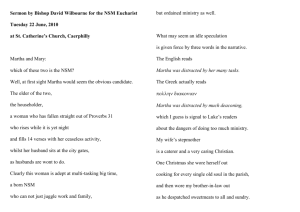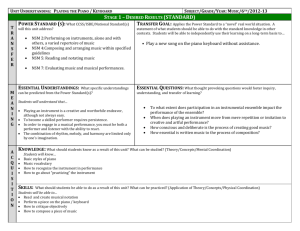New Service Models Report to the Provost Executive Summary
advertisement
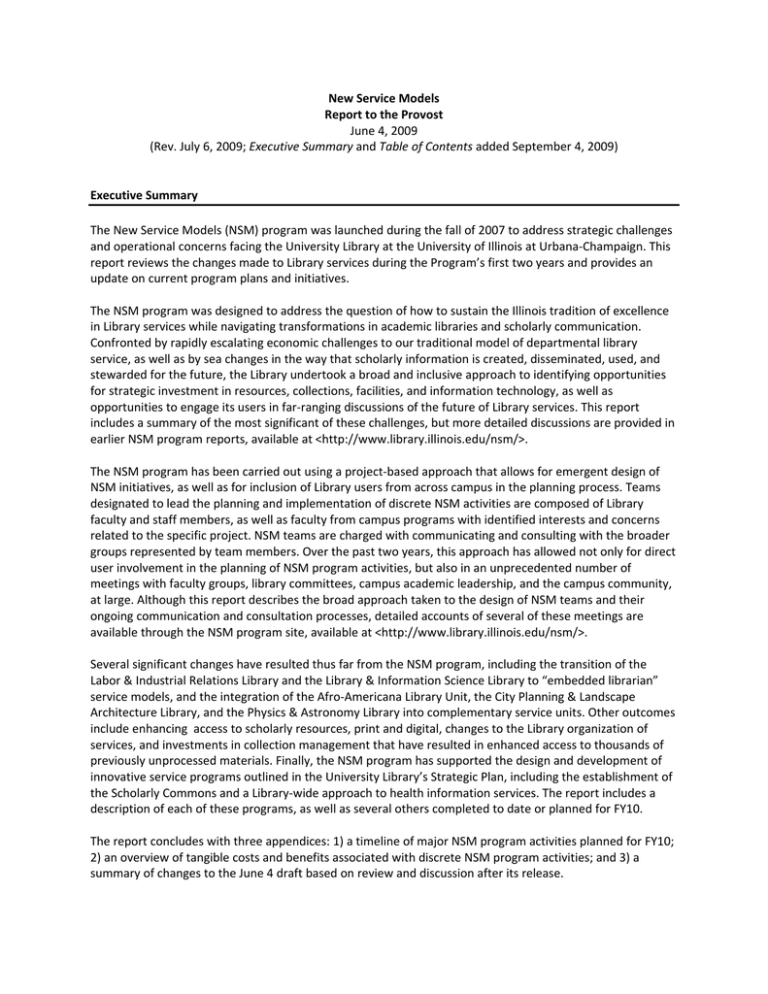
New Service Models Report to the Provost June 4, 2009 (Rev. July 6, 2009; Executive Summary and Table of Contents added September 4, 2009) Executive Summary The New Service Models (NSM) program was launched during the fall of 2007 to address strategic challenges and operational concerns facing the University Library at the University of Illinois at Urbana‐Champaign. This report reviews the changes made to Library services during the Program’s first two years and provides an update on current program plans and initiatives. The NSM program was designed to address the question of how to sustain the Illinois tradition of excellence in Library services while navigating transformations in academic libraries and scholarly communication. Confronted by rapidly escalating economic challenges to our traditional model of departmental library service, as well as by sea changes in the way that scholarly information is created, disseminated, used, and stewarded for the future, the Library undertook a broad and inclusive approach to identifying opportunities for strategic investment in resources, collections, facilities, and information technology, as well as opportunities to engage its users in far‐ranging discussions of the future of Library services. This report includes a summary of the most significant of these challenges, but more detailed discussions are provided in earlier NSM program reports, available at <http://www.library.illinois.edu/nsm/>. The NSM program has been carried out using a project‐based approach that allows for emergent design of NSM initiatives, as well as for inclusion of Library users from across campus in the planning process. Teams designated to lead the planning and implementation of discrete NSM activities are composed of Library faculty and staff members, as well as faculty from campus programs with identified interests and concerns related to the specific project. NSM teams are charged with communicating and consulting with the broader groups represented by team members. Over the past two years, this approach has allowed not only for direct user involvement in the planning of NSM program activities, but also in an unprecedented number of meetings with faculty groups, library committees, campus academic leadership, and the campus community, at large. Although this report describes the broad approach taken to the design of NSM teams and their ongoing communication and consultation processes, detailed accounts of several of these meetings are available through the NSM program site, available at <http://www.library.illinois.edu/nsm/>. Several significant changes have resulted thus far from the NSM program, including the transition of the Labor & Industrial Relations Library and the Library & Information Science Library to “embedded librarian” service models, and the integration of the Afro‐Americana Library Unit, the City Planning & Landscape Architecture Library, and the Physics & Astronomy Library into complementary service units. Other outcomes include enhancing access to scholarly resources, print and digital, changes to the Library organization of services, and investments in collection management that have resulted in enhanced access to thousands of previously unprocessed materials. Finally, the NSM program has supported the design and development of innovative service programs outlined in the University Library’s Strategic Plan, including the establishment of the Scholarly Commons and a Library‐wide approach to health information services. The report includes a description of each of these programs, as well as several others completed to date or planned for FY10. The report concludes with three appendices: 1) a timeline of major NSM program activities planned for FY10; 2) an overview of tangible costs and benefits associated with discrete NSM program activities; and 3) a summary of changes to the June 4 draft based on review and discussion after its release.
